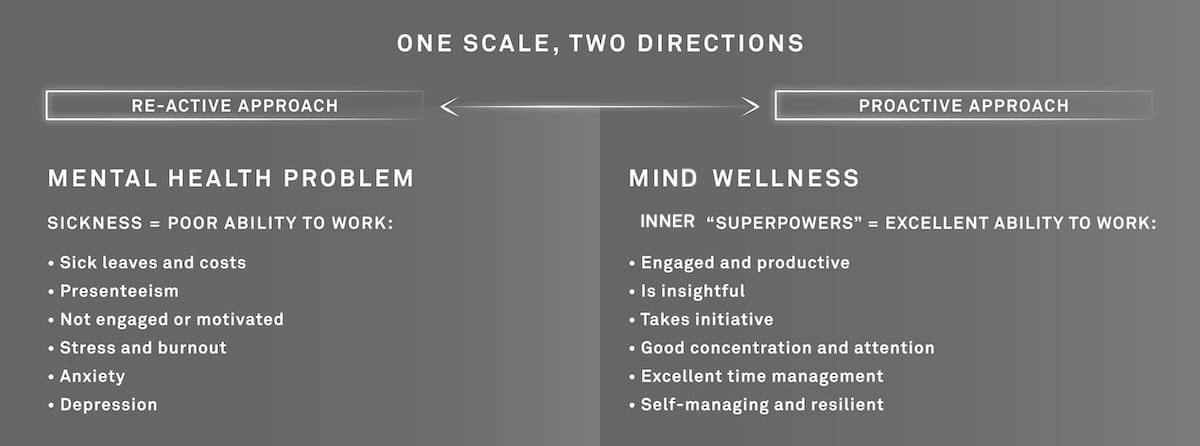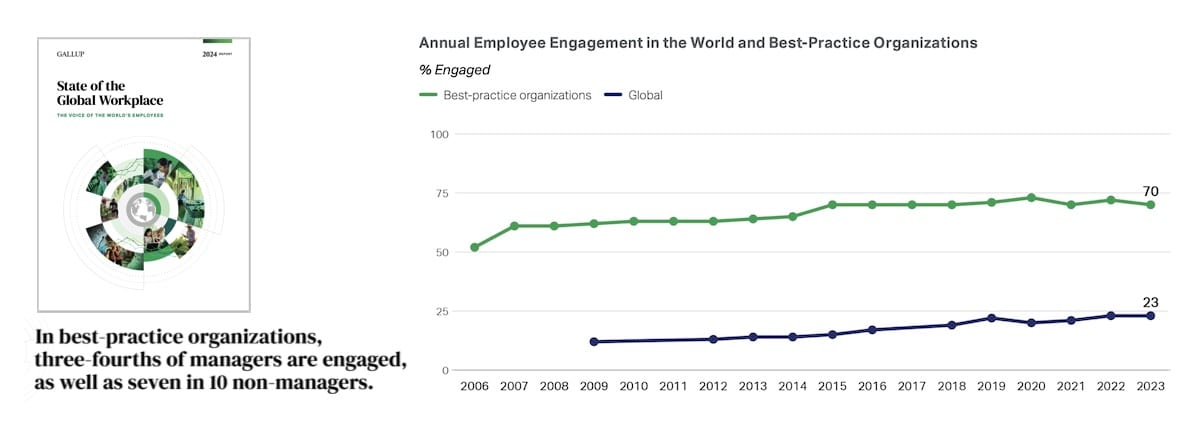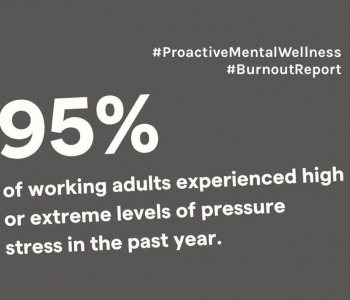It’s Time to focus on Mental wellness in the Workplace
World Mental Health Day is again on 10th October 2024. The official theme, set annually by the World Federation for Mental Health (UK), is this year: “It is time to prioritise mental health in the workplace.” This call to action could not be more timely, as businesses around the world are acknowledging the urgent need to embed mental wellness in their cultures.
To be successful here, it shouldn't be a reactive solution when problems appear, but a proactive and preventative approach to sustain the personal sustainability of every employee and entrepreneur.
Working or running a business demands having a fit mind equipped with intrapersonal skills.
Why is it beneficial to prioritize mental health in the workplace?
In an era where stress, burnout, anxiousness, and even more serious mental health struggles are reaching new heights, employers are slowly beginning to understand that taking action to prioritize mental health in the workplace isn’t just a moral obligation. It’s also a business imperative.
In a situation where 9 out of 10 employees are stressed, burnout seems inevitable.

Burnout has an 86 to 92% overlap with depression, and this makes stress reduction a must.
Also, the economic situation is such that there is a huge amount of uncertainty, so entrepreneurs and their employees are often anxious. This easily leads to anxiety disorders.
When mental wellness in the workplace is nurtured, employee productivity increases, absenteeism drops, and overall engagement rises. A resilient, supported workforce can navigate challenges more effectively and contribute to the sustainability and innovation of any organization.
Why a Proactive Approach to Mental Wellness is Essential
Up to now, mental health issues in the workplace are mostly addressed only after they have become visible or severe (left side of the graph below). Such reactive treatment or therapy-based approach often results in crises, affecting both individuals and organizations.

We are happy to see that some forward-looking businesses now realize that by fostering mental wellness in the workplace proactively (the right-hand side of the graph above), they can mitigate issues before they escalate.
A preventative approach requires businesses to go beyond merely offering support in times of crisis. Instead, it’s about embedding mental wellness considerations into the daily fabric of work life.
For this, we need to normalize training our minds, secure open conversations, reduce stigma related to mental health issues, and create a psychologically safe work environment.
Employees should feel empowered to take the needed pauses and also use work time for relaxing mental wellness trainings. When people have fit minds, businesses also win from this.
|
Both leaders and employees should dare to voice concerns early.
Only when you know that mental wellness in the workplace is a clear priority will you feel free to speak up and support each other.
We all have mental health, but today, most of us lack mental wellness at work. So, mental wellness in the workplace needs to be addressed more holistically and open-mindedly than today.

Training the mind is a core aspect of this proactive model. Just as employees are encouraged to engage in professional development to sharpen their skills, it’s vital to provide opportunities that promote mental resilience.
Offering easy-to-use training sessions on learning practical intrapersonal skills supports not only stress reduction but can equip staff with the inner tools they need to handle workplace pressures with greater ease.
Proactive mental wellness training sessions help employees understand how to manage stress before it snowballs into burnout or mental health crises, ensuring a healthier and more productive work environment. However, that isn't all.
A person who learns to lead their intrapersonal processes also becomes better at holding focus, finding creative solutions, and taking initiative. So, training the mind also improves employee engagement (see the graph below: best-practice organizations' work engagement vs average work engagement).

The Business Case for Mental Wellness Training
For businesses, the return on investment for prioritizing mental wellness in the workplace is clear.
Research consistently shows that companies that invest in employee mental health benefit from reduced absenteeism, lower turnover rates, and higher levels of innovation and creativity. Such investment can have 10X ROI (ROI from 9,7 to 10,8)!
Employees who feel mentally supported are also more likely to stay loyal and committed to their company's mission and vision.
When your mind is calm and fit and you see your role in the business model, you become willing to contribute and seek self-realization through what you do. Furthermore, workplaces that prioritize mental wellness can foster stronger collaboration and communication within teams.
When employees feel valued and supported, they are more willing to collaborate openly and bring fresh ideas to the table. This boosts the organization’s ability to solve problems creatively and compete more effectively in the marketplace.
Workplace mental wellness training doesn’t need to be costly to be effective, as we have proven. It has been our mission to make them easy to use, relaxing as well as supporting professional skills.
Also, combining them with simple initiatives, such as flexible working hours, encouraging regular breaks, and ensuring that everyone takes out annual holidays, matters.
For example, securing silent areas where people can concentrate on work and encouraging regular mental wellness tests can make a huge difference. When implemented consistently, all such minor aspects combined with regular mental wellness trainings will have a profound impact on employee morale and mental wellbeing.
A Call to Action: Training the Mind for Long-term Success
It’s time to move beyond just talking about mental wellness and take concrete steps to prioritize mental health in the workplace.
Leaders should view this as an ongoing effort, not a one-off initiative.
Start by offering proactive trainings that focus on building mental resilience. Just as physical health can be maintained through regular exercise, mental health requires consistent effort.
|
The goal should be to create a workplace where mental wellness is part of the organizational DNA – a place where employees can bring their whole selves to work, knowing they are supported both professionally and mentally. By doing so, companies not only benefit their bottom line but also create a lasting positive impact on their employees’ lives.
Conclusion
In 2024, the message is clear: It’s time to prioritize mental wellness in the workplace.
The future of business success lies in learning intrapersonal skills, as it allows you to build resilient and healthy teams.
With the applicable intrapersonal skills and a proactive mindset, workplaces can ensure that mental health is not just a priority for this World Mental Health Day, but every day moving forward.
This Mental Health Day blog post is contributed by Kaur Lass. Updated 12.08.2025





